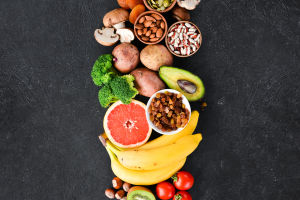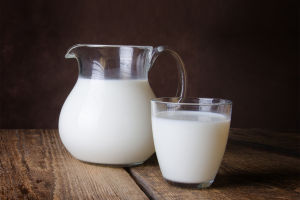Milk, the liquid produced by the mammary glands of mammals, has been a dietary staple for centuries.
Dear Lykkers! From nourishing infants with maternal milk to providing essential nutrients through dairy and plant-based alternatives, milk plays a vital role in nutrition.
Composition of Dairy Milk
Whole cow's milk is about 87% water, while the remaining 13% consists of proteins, carbohydrates, vitamins, and minerals. Processing techniques adjust the fat content to produce varieties like reduced-fat (2%), low-fat (1%), and non-fat or skim milk.
Hormonal Content
Cows are often pregnant during milking, so dairy milk naturally contains hormones like IGF-1, estrogens, and progestins. Some farms also administer additional hormones to boost production.
Sources of Nutrients
Milk is a rich source of:
Calcium
Protein
Vitamin B2 (Riboflavin)
Vitamin B12
Potassium
Phosphorus
Vitamin A and D (added during processing)
Milk and Health
The Dietary Guidelines for Americans recommend three 8-ounce servings of milk or equivalent dairy foods daily to enhance calcium intake and potentially lower the risk of osteoporosis. Despite this, research on milk's health effects remains inconclusive, with studies sometimes showing contradictory outcomes.
Factors Affecting Research Findings
Variability in milk consumption across regions, e.g., lower intake in Japan compared to Western countries.
Inclusion of different milk types (whole, reduced-fat, fat-free, or organic).
Variations in milk composition due to cow breed and feed.
Dietary patterns of study participants, such as intake of fruits, vegetables, or processed foods.
Storage Guidelines
Milk should be refrigerated below 40°F and discarded if left at room temperature for over two hours. Pasteurization kills most bacteria, but improper storage can allow remaining bacteria to multiply.
Shelf Life
Opened milk lasts about 3-5 days after the sell-by date if refrigerated. Spoiled milk has a sour odor and lumpy texture due to bacterial activity producing lactic acid.
Lactose-Free Milk
Lactose-free milk contains lactase to break down lactose and typically lasts longer—about 7 days after opening, if properly refrigerated.
Is Cow Milk Good for You? Dr. Steven Gundry's Best Milks for Your Health
Video by The Dr. Gundry Podcast
Serving Ideas
Milk is versatile and can be incorporated into various meals and snacks:
Breakfast Smoothie
Blend 1 cup of milk, 1/2 cup of berries, and 1 small banana for a nutrient-packed drink.
Overnight Oats
Combine 1 cup of milk, 1/2 cup of rolled oats, 1 tablespoon chia seeds, nuts, banana slices, and berries in a jar. Shake well and refrigerate overnight.
Hot Oatmeal
Cook rolled oats in milk using a 1:2 ratio for a creamy breakfast.
Did You Know?
Milk from animals like sheep, goats, and yaks is popular in Europe, the Middle East, and Asia.
Cheese Production
Sheep’s milk is used for feta and ricotta, while goat’s milk produces chèvre (goat cheese).
Nutritional Comparison
Sheep, goat, and yak milk often have more calcium than cow’s milk and similar levels of protein and carbohydrates. They contain lactose but in smaller amounts, making them easier to digest for those with lactose sensitivity.
Milk remains a cornerstone of nutrition, offering versatility and a wealth of health benefits when consumed in moderation and stored properly.


